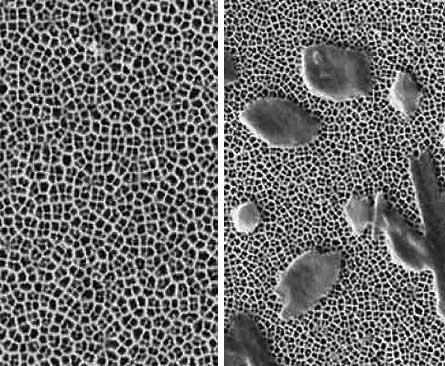- More than 2 years ago
ChaeaSoccer-ball–shaped carbon nanoparticles called buckyballs may keep water flowing through filters, new research shows.

As water passes through treatment plants, communities of bacteria called biofilms sometimes stay behind and gum up the works, a harmful process known as biofouling. Biofouling costs the United States billions of dollars each year in equipment damage, contamination, energy loss and medical costs stemming from bad water, according to the Center for Biofilm Engineering at Montana State University in Bozeman.
In the new study, researchers led by Claudia Gunsch at Duke University in Durham, N.C., found that bacteria don’t stick nearly as well to water filter membranes that are coated with buckyballs. The researchers ran bacteria-laden liquid through treated or untreated filters and then counted how many bacterial communities stuck. After three days, the buckyball-treated membranes had an average of 16 to 18 bacterial colonies per 17 square centimeters, the team reports in the March 5 Journal of Membrane Science. Untreated membranes had too many bacterial colonies to count. The researchers don’t yet know how buckyballs do their antimicrobial magic.
More research is needed before buckyballs can be used in water treatment plants. “The main drawback is that we don’t know the effect of nanoparticles in the environment,” Gunsch says.






